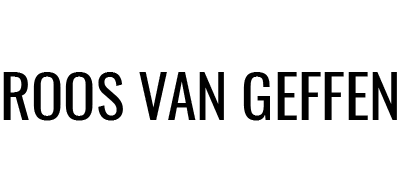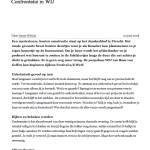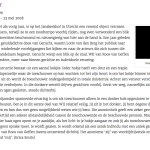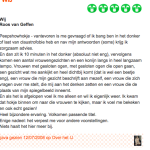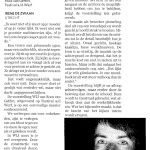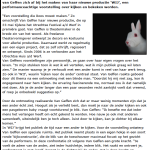Wij 2008
Wij
Regie, tekst en vormgeving Wij, één-op-één ervaringsvoorstelling, première 23 mei 2008 Festival aan de Werf, Over ‘t IJ Festival-De Karavaan, Festival Bies!
Korte video impressie 8:15”
Wij is een ervaringsvoorstelling over kijken en bekeken worden. Publiek zit individueel in een cabine. Levende gezichten verschijnen, aanvankelijk ver weg, daarna dichterbij. Toeschouwers krijgen de kans goed te kijken, maar worden zelf ook bekeken, beschreven, benaderd. Ruimte ontstaat voor existentiële vragen zoals: Hoe kijk ik naar jou, wie ben je, maar vooral: wie ben ik?
Lees hier meer
Concept, vormgeving en regie: Roos van Geffen, performers: Aline Mohl, Barbara Devens, Jacolien Honders, Jeanette van der Steen, Loes Buenen, Lu Marivoet, Margriet De Haene, Marleen Kleinstapel, Sofie Saller, Floor Paul, componist: Seamus Cater, productie: Coosje Kuipers/Huis aan de Werf, dramaturg: Bas van Peijpe, techniek: Marco Steenks, decorbouw: Smids en Hooijboer
De Theatermaker: De voorstelling ‘Wij’ in top 3 van beste mimevoorstellingen van 2008
Deadline: “Ultiem theater (…) Zo hoort theater te zijn: aangrijpend en persoonlijk.”
8Weekly: Je wordt erkend als een uniek individu met een uniek gezicht. Op die momenten komt WIJ van Roos van Geffen ineens ontzettend dichtbij. Het anonieme ‘zij’ van voorbijdrijvende onbekende gezichten wordt een aangrijpend ‘mij’.
Parool: “een even beklemmende als intieme een-op-een voorstelling”
De Pers: Heftig maar mooi
Utrechts Nieuwsblad: **** “op een eenvoudige manier confronterend”
Moose: “Heel bijzondere ervaring. Volkomen passende titel. Enige nadeel: het verpest me voor andere voorstellingen. Niets haalt het hier meer bij”
Theater Schrift Lucifer / Bas van Peijpe: De serie ontmoetingen in Wij zet enerzijds aan tot allerlei gedachten over kijken, bekeken worden en intimiteit. Maar daarnaast organiseert de voorstelling een experimenterende en creërende praktijk in de hierboven beschreven zin. De bezoeker ‘bewoont’ de constructive en ondergaat een stapsgewijze transformative van toeschouwer-op-afstand tot deelgenoot in een intiem contact. Dit alles gebeurt zo langzaam en geconcentreerd, date r alle ruimte is voor een mate van inbreng in dit experiment, voor het creëen en beproeven van verschillende ‘configuraties van jezelf-in-deze-situatie: blijf ik kijken of wend je je blik af? Stel je je open of trek je een muur op? Praat je terug? En wat zeg dan? En ook hier weer de basale reflective ten dienste van het experiment: wat doet dit met je, hier-en-nu? Hier het hele artikel
